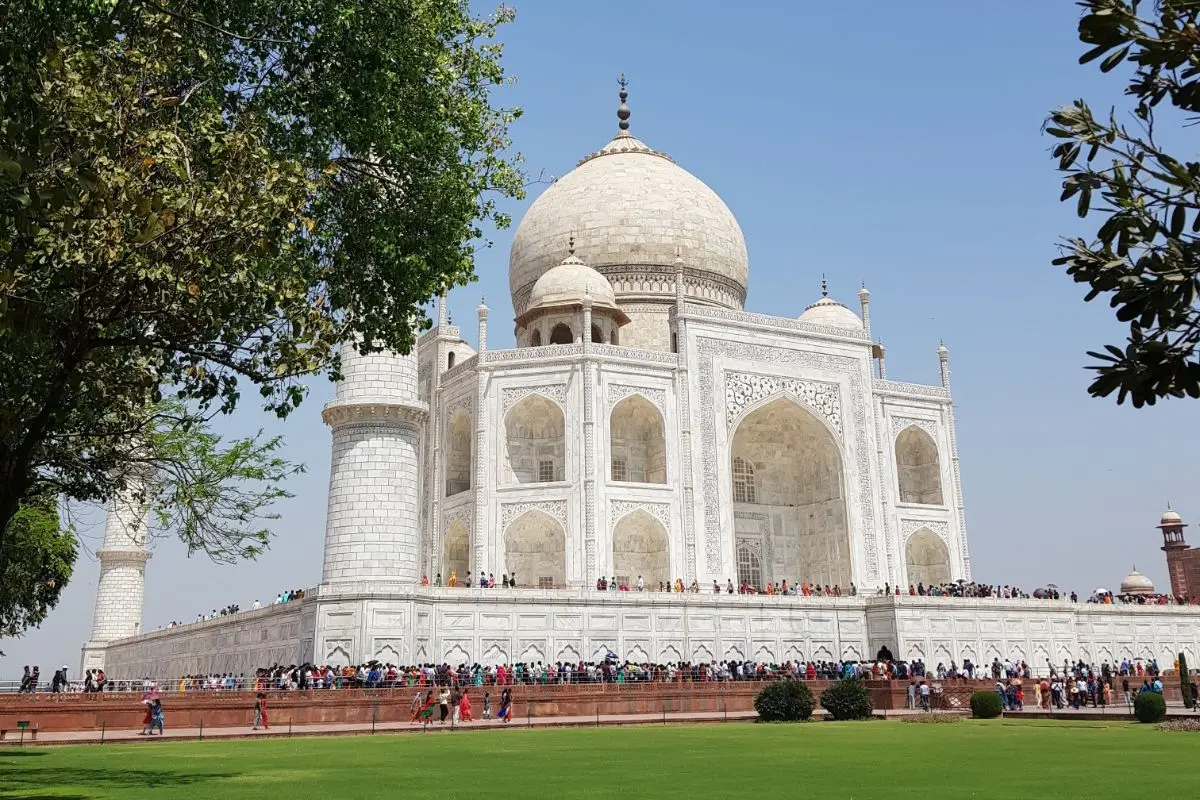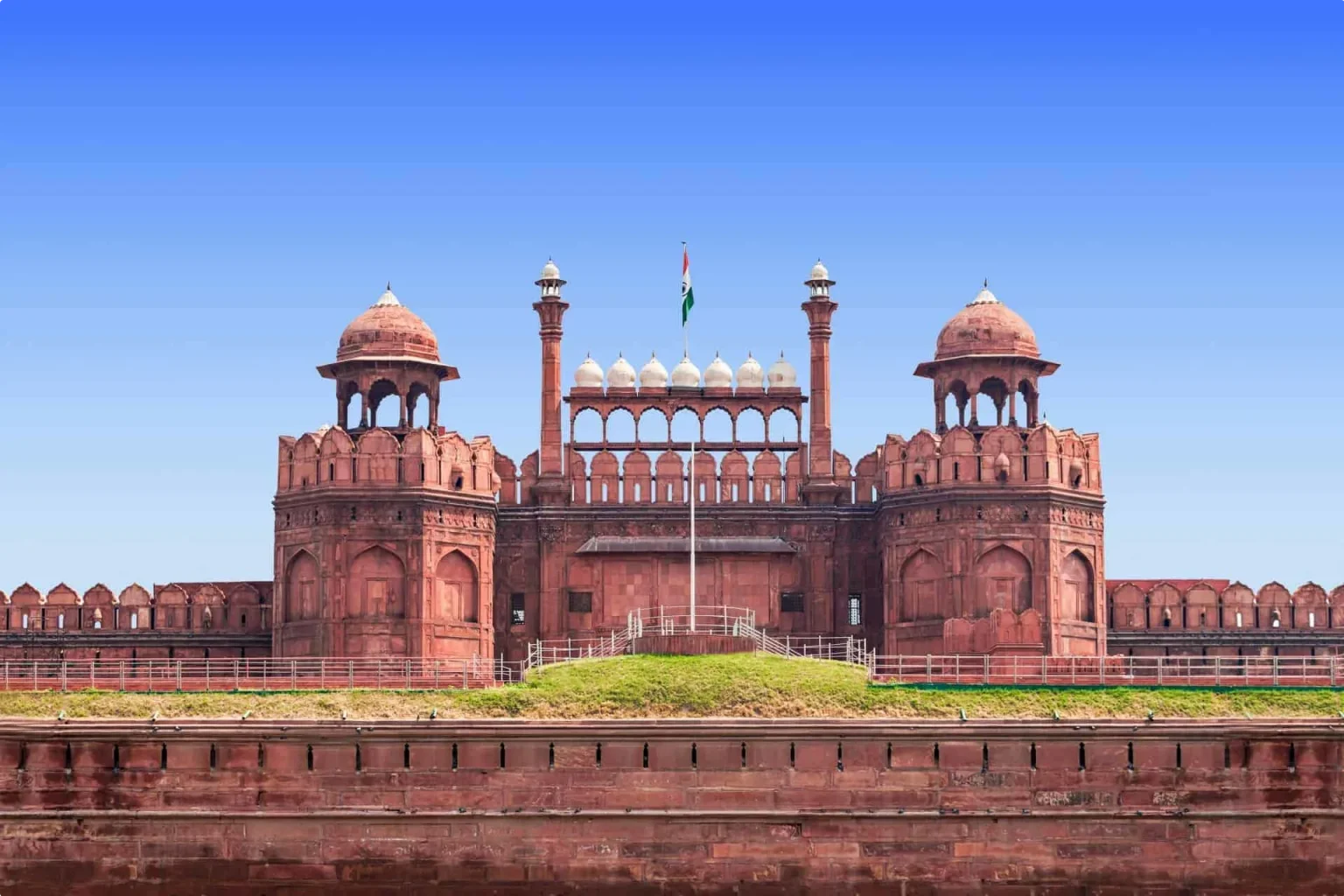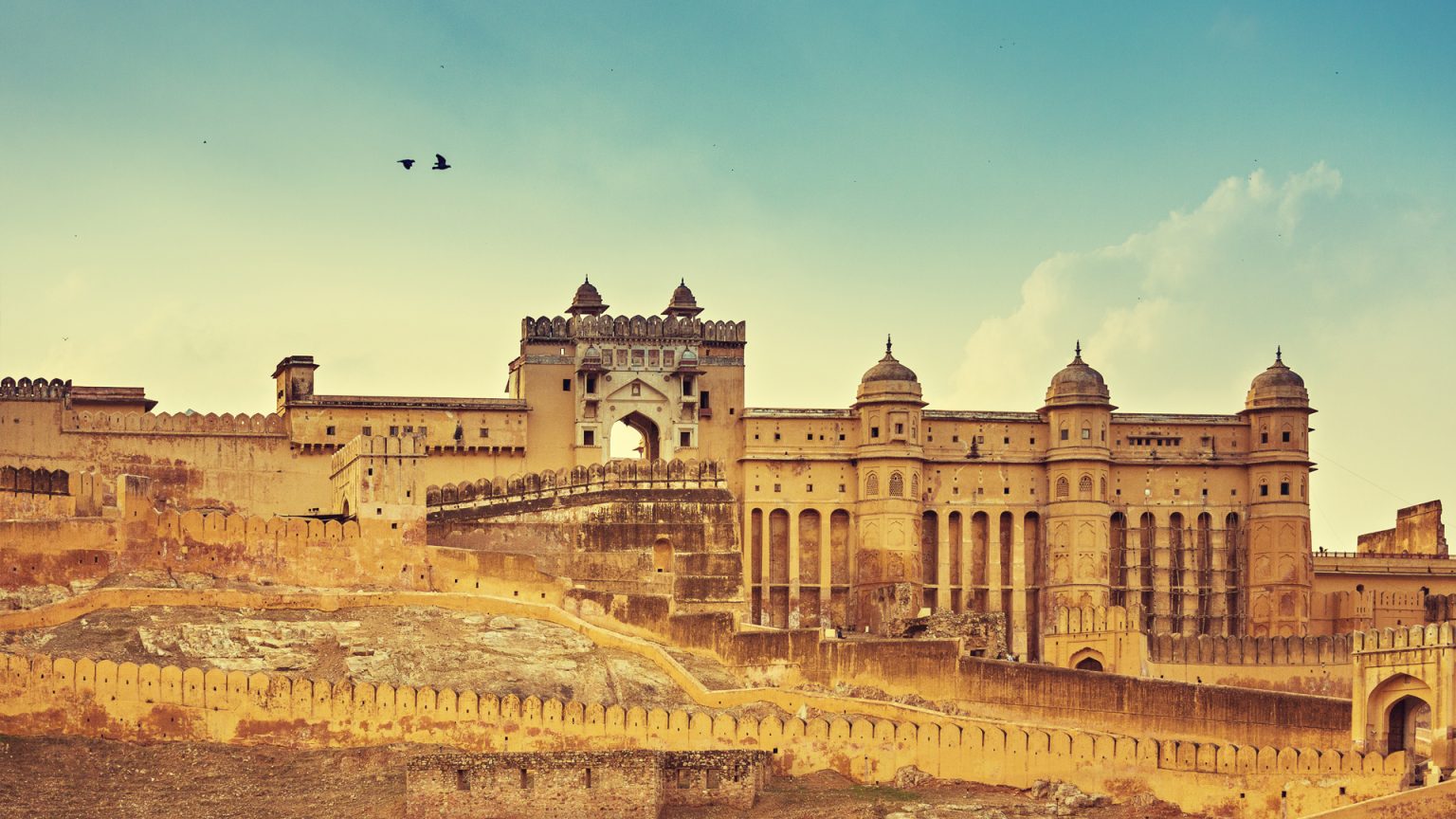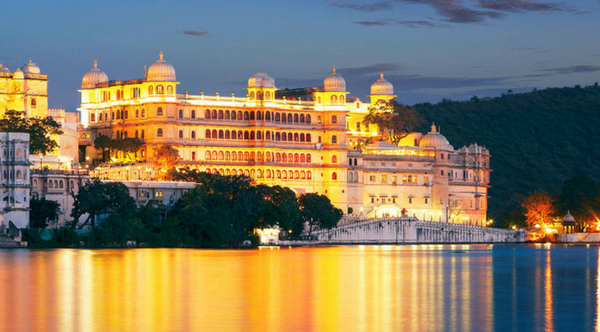



Day 01: Arrival in Delhi
Upon your arrival at the international airport in Delhi, our representative will extend a warm welcome and facilitate your transfer to your designated accommodation. The evening presents an excellent opportunity for indulging in shopping and exploring the vibrant local bazaars. Your overnight stay will be at the chosen hotel.
Day 02: Discovering Delhi
Following a leisurely breakfast, embark on a comprehensive day-long exploration of both Old and New Delhi. Your itinerary will encompass renowned landmarks such as the Red Fort, Chandni Chowk, Jama Masjid, Lotus Temple, India Gate, and the majestic government edifices including the President’s House and the Mahatma Gandhi Memorial. Your accommodation for the night will be at the selected hotel.
Day 03: Delhi to Agra
After savoring a delectable breakfast, you will check out from your hotel in Delhi and proceed towards the historical city of Agra. Upon arrival in Agra, you will be swiftly accommodated at your pre-booked hotel. Following a brief period of rest and rejuvenation, you will embark on a captivating sightseeing tour of Agra. This tour will include the iconic Taj Mahal and the Agra Fort, both showcasing architectural brilliance. The Agra Fort encompasses notable attractions like Diwan-I-Aam, Hamam, Moti Masjid, Sheesh Mahal, Musamman Burj, Jehangiri Mahal, and Diwan-e-Khas. After immersing yourself in the grandeur of these architectural marvels, you will return to your hotel, preparing for an evening of shopping and dining. Upon concluding your shopping excursion, you will return to your hotel for a delectable dinner and an overnight stay.
Day 04: Agra to Jaipur
Following breakfast, you will bid farewell to Agra and set off for the enchanting city of Jaipur. En route, a visit to the mesmerizing Fatehpur Sikri, with its stunning Buland Darwaza, will be a memorable highlight. Upon reaching Jaipur, you will promptly check in to your chosen hotel. The remainder of the day is yours to enjoy at your leisure, and you will spend the night at the same hotel.
Day 05: Jaipur Expedition
Begin your day with a delightful breakfast, followed by a comprehensive exploration of Jaipur’s key attractions. Your city tour will encompass the majestic Amber Fort, the City Palace of Jaipur, the Hawa Mahal (Palace of Winds), the Jantar Mantar, the Ram Niwas Garden, and the Jal Mahal, all enhanced by a royal elephant ride. In the evening, return to your hotel for an overnight stay, accompanied by a traditional Indian cuisine dinner.
Day 06: Jaipur to Udaipur
Enjoy a hearty breakfast before departing for Udaipur. Enroute, you will have the opportunity to visit Pushkar, a significant pilgrimage center known for its serene Brahma Temple, the only one of its kind in the country. Upon arrival in Udaipur, you will be promptly accommodated at your selected hotel. The day is yours to relish at your own pace, and your overnight stay at the hotel will be complemented by a delightful meal.
Day 07: Udaipur Exploration
After breakfast, set out for a local sightseeing tour of Udaipur. Your itinerary will encompass the City Palace, Jagdish Temple, and Saheliyon Ki Badi. The evening is reserved for a captivating Boat Ride on Pichola Lake, along with a visit to Jagmandir Island and Meera Kala Mandir. You will conclude your day with a dinner and an overnight stay at the hotel.
Day 08: Udaipur to Delhi
After a satisfying breakfast, check out from your hotel and proceed to the airport for your flight to Delhi. Upon arrival in Delhi, if time allows, you will have the opportunity to explore the renowned local markets for shopping. Subsequently, our executive will accompany you to the international airport in Delhi, from where you will board your onward flight to your final destination.
# Delhi in the 16th Century: A Glimpse into Mughal Magnificence
**Introductory Paragraph:**
Welcome to Delhi in the 16th century, a bustling city that stands as the heart of the Mughal Empire. As you step into this vibrant metropolis, you’ll find yourself amidst a blend of exquisite architecture, rich culture, and influential figures of the time. The year is 1575, and the air is filled with the fragrance of spices, the echoes of poetry, and the sounds of bustling markets.
**Most Interesting People Alive:**
1. **Emperor Akbar the Great:** This visionary ruler is known for his tolerance, patronage of the arts, and efforts to unify his diverse empire.
2. **Birbal:** Akbar’s witty and clever advisor, Birbal, is famous for his humorous and insightful tales, making him a captivating figure to meet.
3. **Tansen:** The legendary musician and composer at Akbar’s court, Tansen’s melodic talents will enchant your senses.
4. **Guru Ram Das:** The fourth Sikh Guru is spreading the teachings of Sikhism and could provide spiritual guidance.
**Most Interesting Sights to See:**
1. **Red Fort:** Under construction by Emperor Akbar, this colossal fort with its striking red sandstone walls is a testament to Mughal architectural prowess.
2. **Jama Masjid:** The grand mosque, also commissioned by Akbar, is an architectural marvel, offering breathtaking panoramic views of the city from its minarets.
3. **Diwan-i-Khas:** Visit the Hall of Private Audience where Akbar held discussions with scholars and religious leaders, emphasizing his inclusive policies.
4. **Chandni Chowk:** Wander through the bustling market streets, experiencing the vibrant colors, aromatic spices, and traditional crafts of the era.
**Everyday Life:**
For the common people of Delhi, life revolves around trade, agriculture, and local markets. The city’s diverse population includes Hindus, Muslims, and Sikhs, coexisting harmoniously. People engage in various crafts, from carpet weaving to pottery, contributing to the city’s rich cultural tapestry.
**Best Foods to Eat:**
Indulge in the culinary delights of 16th-century Delhi, with dishes like kebabs, biryani, and rich Mughlai curries. Don’t forget to savor the sweet and fragrant jalebi, a popular dessert of the time.
**Dangers to Be Concerned About:**
While Delhi is a center of culture and learning, it’s not without its risks. Stay cautious of political intrigues and power struggles within the Mughal court. Additionally, the city can get overcrowded, so be mindful of pickpockets in bustling markets.
# Jaipur in the 18th Century: The Pink City’s Royal Splendor
**Introductory Paragraph:**
Welcome to Jaipur in the 18th century, a city that exudes royal opulence and architectural marvels. It’s the year 1734, and the Pink City, as it’s known today, is just beginning to take shape under the reign of Maharaja Sawai Jai Singh II. Prepare to be mesmerized by the grandeur of palaces, the intricacy of craftsmanship, and the vibrant culture that thrives within these walls.
**Most Interesting People Alive:**
1. **Maharaja Sawai Jai Singh II:** The visionary ruler and founder of Jaipur, Jai Singh II, is a polymath known for his contributions to astronomy, mathematics, and architecture.
2. **Sawai Ram Singh II:** The 19-year-old ruler is about to ascend the throne, and his reign will see further development and modernization of Jaipur.
3. **Maharani Swaroop Kaur:** The queen is known for her patronage of the arts and her significant role in the city’s cultural development.
4. **Sawai Bhawani Singh:** A young prince with a promising future, he will play a vital role in preserving Jaipur’s heritage in the years to come.
**Most Interesting Sights to See:**
1. **Hawa Mahal:** Marvel at the Palace of Winds, a unique five-story structure with 953 small windows designed to allow royal ladies to observe street festivals without being seen.
2. **City Palace:** Explore the opulent royal residence, City Palace, which boasts a museum showcasing artifacts from Jaipur’s history.
3. **Jantar Mantar:** Visit the astronomical observatory built by Maharaja Jai Singh II, featuring fascinating instruments for celestial observation.
4. **Amber Fort:** Venture to the nearby Amber Fort, a majestic hilltop fortress known for its intricate mirror work and stunning architecture.
**Everyday Life:**
Jaipur in the 18th century is a hub of activity, with the bustling bazaars filled with artisans, traders, and craftsmen. The city’s inhabitants are known for their vibrant clothing, intricate jewelry, and rich cultural traditions.
**Best Foods to Eat:**
Indulge in Rajasthani cuisine with dishes like dal baati churma, gatte ki sabzi, and laal maas. Don’t forget to savor traditional sweets like ghewar and mawa kachori.
**Dangers to Be Concerned About:**
While Jaipur is a city of splendor, travelers should be wary of political intrigues and power struggles within the royal court. Additionally, keep an eye out for the vibrant but chaotic streets, as they can get crowded and potentially disorienting.
DESTINATION and TIME: Feel free to provide another historical place and time-period for me to explore.
# Agra in the 17th Century: The Jewel of the Mughal Empire
**Introductory Paragraph:**
Step into the 17th century and discover Agra, a city that gleams as the crowning jewel of the Mughal Empire. It’s the year 1631, and the city is at the zenith of its glory. Under the rule of Emperor Shah Jahan, Agra boasts magnificent architecture, exquisite gardens, and a rich cultural tapestry that will leave you in awe.
**Most Interesting People Alive:**
1. **Emperor Shah Jahan:** The visionary ruler is known for commissioning the Taj Mahal, a symbol of eternal love, in memory of his beloved wife Mumtaz Mahal.
2. **Mumtaz Mahal:** Though she has passed away, Mumtaz Mahal’s legacy lives on in the form of the breathtaking Taj Mahal, a testament to their love.
3. **Ustad Ahmad Lahori:** The chief architect of the Taj Mahal, Ustad Ahmad Lahori’s genius is responsible for the monument’s timeless beauty.
4. **Jahanara Begum:** Shah Jahan’s daughter is a prominent figure at court, known for her intellect, poetry, and artistic pursuits.
**Most Interesting Sights to See:**
1. **Taj Mahal:** Visit the mesmerizing ivory-white marble mausoleum that is the Taj Mahal, a symbol of undying love, with its intricate carvings and pristine gardens.
2. **Agra Fort:** Explore the majestic Agra Fort, a UNESCO World Heritage site, and witness the blend of Mughal and Persian architecture.
3. **Itimad-ud-Daulah’s Tomb:** Admire the delicate marble inlay work at the tomb of Mirza Ghiyas Beg, often referred to as the “Baby Taj.”
4. **Mehtab Bagh:** Enjoy a serene view of the Taj Mahal from across the Yamuna River at Mehtab Bagh, a charbagh complex.
**Everyday Life:**
Agra’s bustling streets are filled with artisans, traders, and craftsmen. The city’s residents are known for their skilled craftsmanship in textiles, jewelry, and the production of fine Persian rugs.
**Best Foods to Eat:**
Delight in Mughlai cuisine with dishes like biryani, kebabs, and the decadent Mughlai chicken curry. Savor the local sweets, including petha and jalebi.
**Dangers to Be Concerned About:**
While Agra is a city of beauty and culture, travelers should be cautious about political intrigues within the Mughal court. Additionally, keep an eye out for bustling markets, which can get crowded and overwhelming.
DESTINATION and TIME: Please provide another historical place and time-period for me to explore.
# Explore the Rich History of Udaipur: A Journey Through Time
If you’re a history enthusiast, Udaipur is a city that should be at the top of your must-visit list. This charming city, located in the heart of Rajasthan, boasts a rich and vibrant history that dates back centuries. In this article, we will take you on a journey through time as we explore the captivating history of Udaipur.
## The Royal Beginnings
Udaipur’s history is synonymous with royalty and grandeur. Founded by Maharana Udai Singh II in 1559, the city was established as the capital of the Mewar Kingdom. Its strategic location amidst the Aravalli Hills and the pristine waters of Lake Pichola made it an ideal choice for a regal capital.
## The City of Lakes
One of the most remarkable features of Udaipur is its numerous lakes, which have played a pivotal role in its history. Lake Pichola, Fateh Sagar Lake, and Udai Sagar Lake are just a few of the magnificent bodies of water that grace the cityscape. These lakes not only provided a source of water but also served as stunning backdrops for the majestic palaces and forts that were constructed during the reign of the Mewar rulers.
## The Architectural Marvels
Udaipur is a treasure trove of architectural marvels, each telling a unique story of its own. The City Palace, a sprawling complex of palaces, courtyards, and gardens, is a testament to the architectural finesse of the Mewar dynasty. The intricate artwork, exquisite frescoes, and ornate balconies will leave you in awe.
Another must-visit is the Jag Mandir, an island palace located in the middle of Lake Pichola. It’s a true masterpiece of Rajput architecture, surrounded by pristine waters, making it seem like a floating marvel.
## The Legendary Maharana Pratap
No discussion about Udaipur’s history would be complete without mentioning the legendary Maharana Pratap. He was one of the most valiant rulers of the Mewar dynasty and is best known for his unwavering courage and indomitable spirit. His epic battles against the Mughal Emperor Akbar are etched in the annals of history.
## Transitioning to Modern Times
As we move forward in time, Udaipur’s history has transitioned into a vibrant present. The city has embraced modernity while preserving its rich heritage. Today, Udaipur is not only a historical treasure but also a thriving tourist destination, offering a blend of tradition and luxury.
## Support the Preservation of Udaipur’s Heritage
Udaipur’s history is a testament to the glory of Rajasthan’s past. It’s a place where every street, every palace, and every fort has a story to tell. If you’re as passionate about preserving this heritage as we are, consider supporting our efforts. Your support will help us continue to create informative content and promote the beauty of Udaipur’s history.
In conclusion, Udaipur’s history is a tapestry of valor, artistry, and grandeur. From its royal beginnings to its modern charm, this city has truly stood the test of time. So, plan your visit to Udaipur and immerse yourself in the enchanting history that awaits you.
Explore Udaipur, where every stone has a story to tell, and every moment is a journey through time.